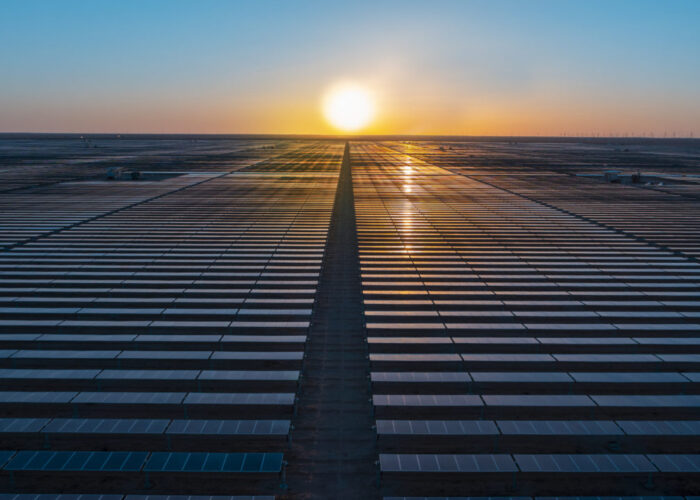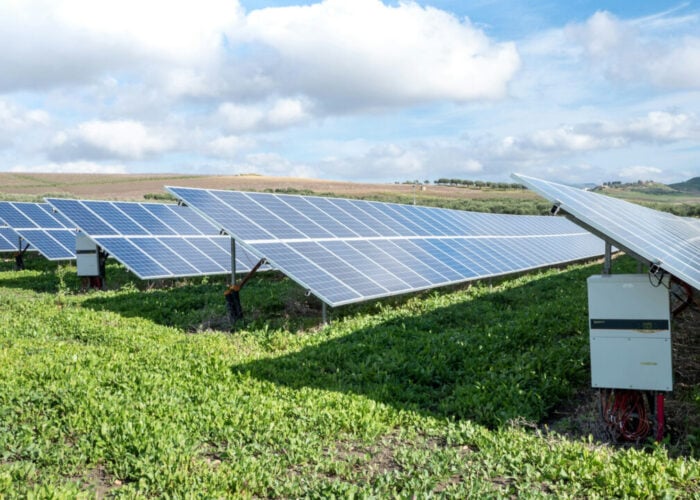Some of the distinctive cylindrical photovoltaic modules produced by bankrupted US thin-film manufacturer Solyndra are being resold in Europe through Photon Energy, PV Tech has learned.
Photon Energy, a PV solutions company headquartered in Holland, said that despite the lack of warranties available, customers are happy to purchase the modules due to their low price, which is becoming an increasingly decisive factor in the context of dwindling subsidies in some European countries.
Unlock unlimited access for 12 whole months of distinctive global analysis
Photovoltaics International is now included.
- Regular insight and analysis of the industry’s biggest developments
- In-depth interviews with the industry’s leading figures
- Unlimited digital access to the PV Tech Power journal catalogue
- Unlimited digital access to the Photovoltaics International journal catalogue
- Access to more than 1,000 technical papers
- Discounts on Solar Media’s portfolio of events, in-person and virtual
Modules produced by Solyndra, which went bankrupt in September 2011 after receiving over US$500 million in funding from US government programmes started under president George W. Bush, were sold off at auction in December that year. Following its bankruptcy, the matter became a topic of controversy, with some critics holding the Obama administration, which had since come into office, responsible and ensuring Solyndra was a regular feature in the 2012 presidential election.
The company developed proprietary technology for its unique modules, which were designed to be lightweight and durable while being of comparable efficiency to other copper indium gallium selenide (CIGS) thin-film modules. Solyndra specifically targeted the commercial rooftop segment of the market. The company’s failure to compete on costs as crystalline prices plummeted in 2011 and 2012 was cited as the reason it eventually went bankrupt.
Marek Farsky, head of sales and procurement at the Czech Republic-based trading arm of Photon Energy, said he missed the auction, but later found out that some stock was available.
“The auction was 2011 – I didn’t know anything about the auction at the time. During 2012 and 2013 I had information that there might be some Solyndra batches still here in Europe which were unsold… A lot of them were in the south of Europe, where the PV market stopped for a while – Greece, Italy, before it was Spain.”
Farsky said the modules are popular in markets, particularly in southern Europe, where subsidies have been reduced or removed entirely, due to the low prices Photon Energy is able to sell them at. He said his company has so far procured 3MW of Solyndra modules, with between 1MW and 2MW already accounted for. According to Farsky, although the goods cannot be put under warranty, Photon Energy has procured enough stock to be able to offer replacements for broken modules. He says that his Solyndra-buying customers are a mixture of those that know the modules’ history and those that don’t.
“Of course, some of them are aware of their history; however, if the price level of Solyndra we sell is substantially lower than current crystalline technology under anti-dumping provision in the EU, they consider savings [more important] than risks with warranty problems. There are no FiTs and other subsidies around in some countries/markets and if customers want to approach grid parity they turn to product which can allow it. Usually final customer is owner of middle-size industrial roofs.”
Killer costs
Stefan de Haan, associate director of solar supply chain research at IHS told PV Tech that while Solyndra had a genuinely disruptive technology that could be successfully targeted at a market segment that was traditionally “not an easy one to sell to with other technologies”, cost remained a serious problem.
“Solyndra had really a disruptive technology that made sense and was specifically targeted at commercial rooftops. It was lightweight but could carry a lot of wind load due to the design and the efficiency was in line with other CIGS approaches – they had really a unique product for a specific market segment.”
“The ‘only’ problem they had, and it’s a big problem, is that they couldn’t bring costs down. As soon as crystalline prices plummeted in 2011 and 2012 the entire PV world was turned upside down and this was the end for Solyndra. Cost killed them – they had costs above US$3 [per watt] when the rest of the industry was at US$1 so they couldn’t sell them.”
“That’s always been Solyndra’s problem that they were too expensive, now that they’re cheap, they find their market!” De Haan said. “It proves that it had potential in terms of technology, just the price was the difficult thing.”
Fellow analyst Finlay Colville, UK-based vice president of NPD Solarbuzz, expressed a concern that over a 20 -year timeframe, the lack of warranty may become a problem, although Stefan de Haan pointed out that if the modules were priced cheaply enough and could be replaced in the short term, a customer was likely to be happy with a 10-year lifespan on a system to get “fairly decent” returns.







